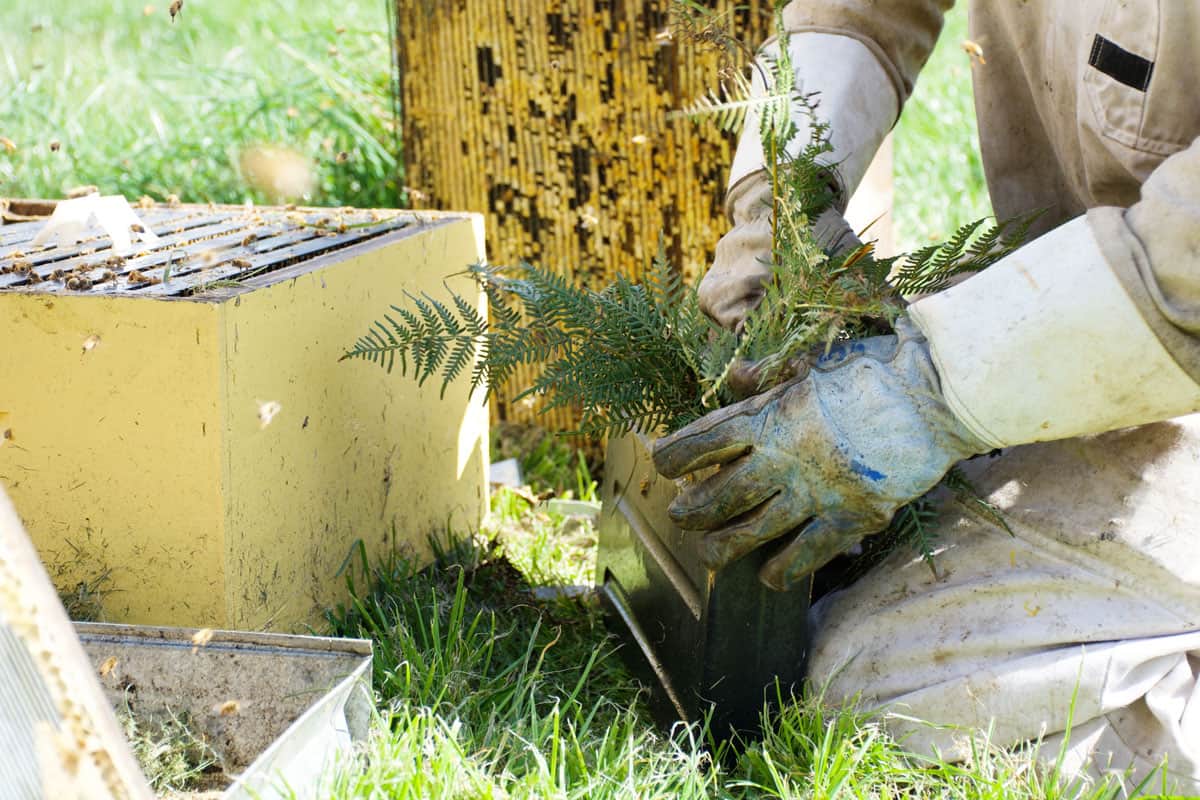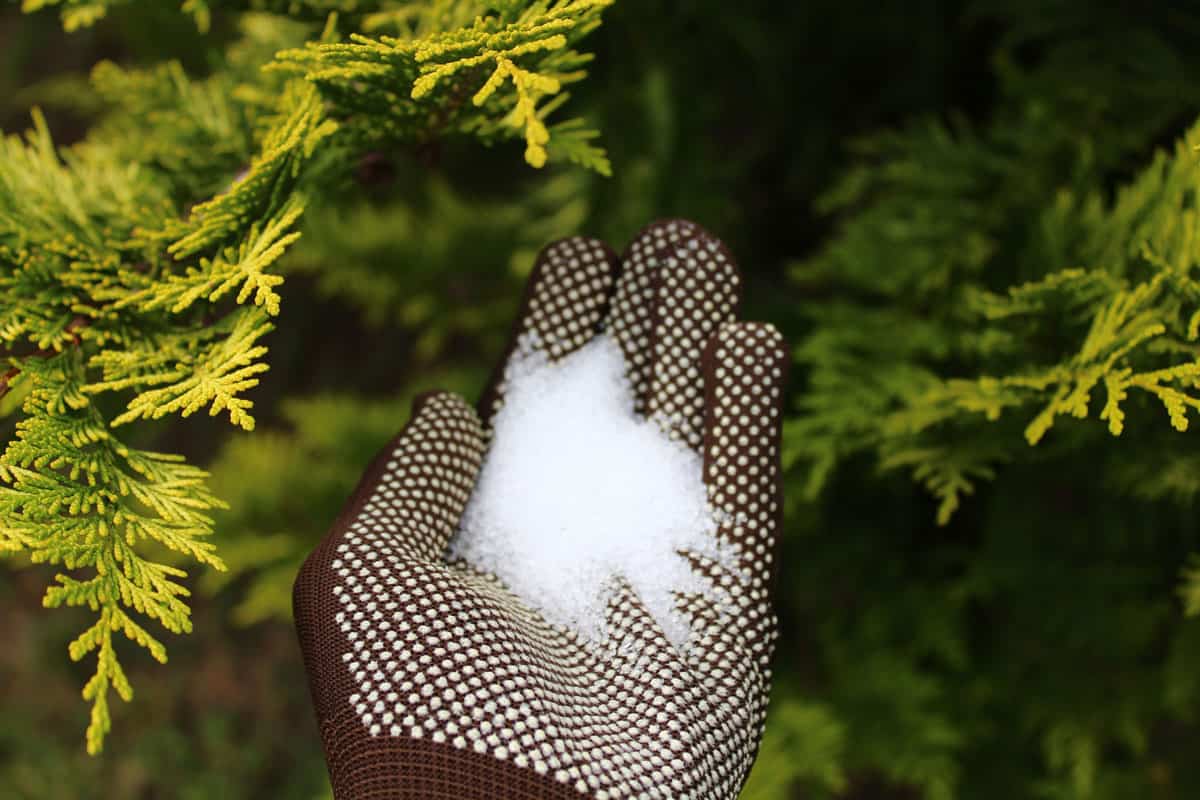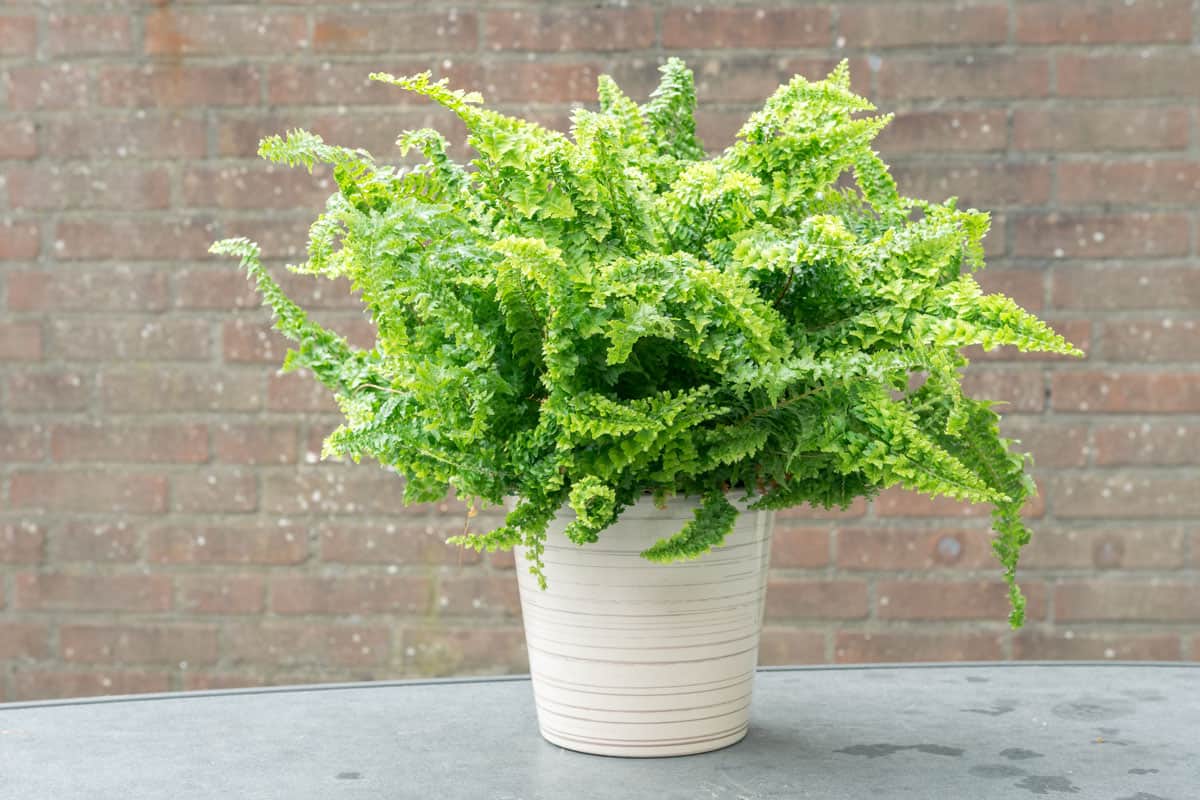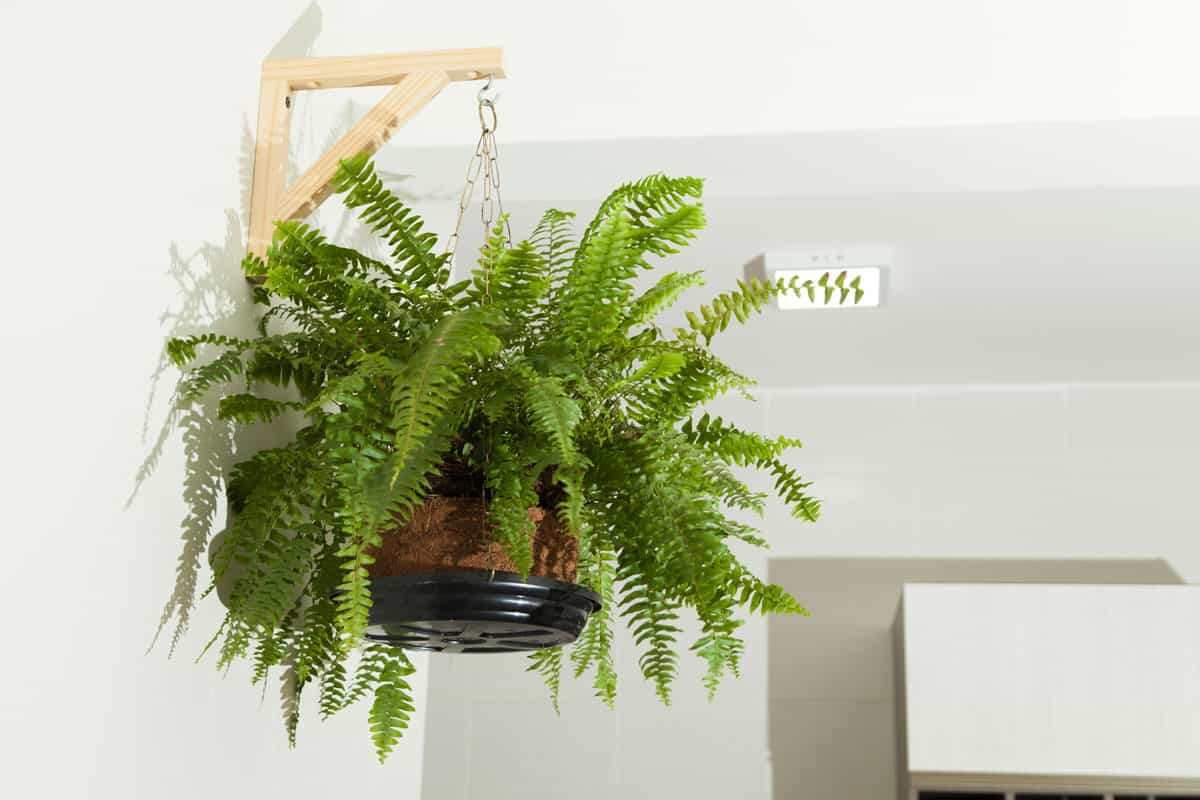Tree ferns are just ferns themselves. Like other kinds of ferns, they never produce their own seeds or flowers. They reproduce by means of spores from offsets or fronds. Ferns have a strong rate of survival, but they can fail. We have researched why tree ferns die and how you can maintain them.
One of the reasons why a tree fern is dying is because of underwatering. This causes the leaves to wilt and shrink, reducing the quality and growth of the fern tree.
Overwatering is another reason a tree fern might die. This causes the leaves to sag because the soil is drowning in water and the roots are starving for oxygen to live. Ferns should have balanced humidity and moist soil to prevent them from dying.
In addition, ferns have uncommon structures and they need extra care. Keep on reading as we go over additional information about ferns and how you can revive them.
![Curly fern in a white pot, Why Is My Tree Fern Dying [And What To Do]?](https://gardentabs.com/wp-content/uploads/2022/08/Why-Is-My-Tree-Fern-Dying-And-What-To-Do-1.png)
Indoor ferns
Some ferns want very damp soil while others prefer less but need proper drainage and slightly dry soil between each watering. Overwatering may lead to the rotting of roots characterized by drooping and yellowing leaves.
If there is less water, the fronds will also start to droop. This problem should be corrected and give the plant chance to survive.
![Curly fern in a white pot, Why Is My Tree Fern Dying [And What To Do]?](https://gardentabs.com/wp-content/uploads/2022/08/Why-Is-My-Tree-Fern-Dying-And-What-To-Do.png)
Follow these procedures:
- Check the pot’s drainage by pushing in a stick or a pen. If it's clogged, repot your fern using organic soil and make use of a wire mesh at the bottom of the pot.
- The fern should not sit in the water. Feel the soil between each watering. The soil should be dried out before you water it again.
Outdoor ferns

Just like indoor ferns, outdoor ferns also need organic and well-draining soil, plenty of water, and indirect light. When the ferns start to get sickly in extreme weather conditions, consider these remedies:
- If you use clay soil that leads to clogging and an improper draining system, dig it up and add compost or organic material. Replace and water them. Leave it for a few weeks to let them revive themselves.
- Transfer the fern to indirect sunlight to prevent the browning of the fronds. Most ferns live in a shaded place with low light. Add layers of wood chips or leaves around the fern if the fronds begin to wilt when watering. This covering will protect the fern and will regain its moisture. Do not feed the ferns so their leaves won’t burn. Most outdoor ferns get nutrients from the soil.
What are the ways to revive your ferns?

In reviving a dying fern, it is important to imitate its environment. Increase the humidity by planting them in organic soil and placing them in a shaded area where there is a stable temperature.
High humidity
A specific amount of humidity is needed for the fern to live. So you may place them inside your kitchen or in the bathroom. These areas are probably more humid compared to other rooms inside your house.
These areas also resemble a native environment which decreases water loss that prevents the ferns from drying.
Pot them with pebbles.
Make use of a tray or a saucer for this procedure. Place the fern in a pot with pebbles and fill the tray with water. The water surrounding the pots will just evaporate and makes a humid climate for the ferns.
This will mimic the natural habitat of the ferns. It will also prevent the leaves from drying. Do not over-water so that the roots will not get rotten.
This ceramic pot is perfect for your ferns. Check this out on Amazon.
Water the ferns consistently and generously
The fern’s soil should be organic, with lots of moisture surrounding its roots. It should also be well-draining so the leaves will not get sag. You can plant the ferns in compost with loads of organic matter and water them as needed. You want to make sure that they receive good moisture.
Water the tree ferns with a generous amount of water so they will reach the roots. Watering them with less water and often will make the soil too moist but will not get the roots where they should be.
Keep away from the scorching heat
One of the great things about ferns is that they can survive in a shady area where direct sunlight is forbidden. Once the leaves are directly facing the sun, it will make the leaves turn brown, and the plant will likely die.
Buy a humidifier
Emulate the natural environment of the ferns by buying a humidifier. It can raise the ideal level of humidity needed by the ferns to live.
Should you use Epsom Salt when watering ferns?

It is not necessary to use Epsom salt when watering your ferns as long as they are planted in rich soil. However, if the leaves start to become yellowish, that is probably because the soil lost its sulfur and magnesium components.
Epsom salt has the presence of sulfur and magnesium. It provides nutrients for your fern and it acts as a fertilizer too.
If the ferns are healthy, there is no need for you to use Epsom salt. Ferns are delicate and may burn by the abundant use of fertilizer.
As you will notice, it is hard to make sure that ferns are getting an adequate amount of water in just a simple glance. However, if you will be consistent in keeping their moisture and consider every important detail about reviving your fern, you can master their hydration and help them to live long.
For sensitive ferns, they need misting occasionally to boost their health.
Proper handling, misting, and watering are necessary, but ferns are otherwise low-maintenance plants. They do not need too much attention and time as long as you know how to make them healthy and provide their natural habitat.
This product is available on Amazon. Click here.
Why does my fern turn brown?

The right level of humidity, enough water, and shade are the ferns' most basic needs. They need these to grow and survive.
The plant tag will explain how you should plant your fern in a shaded area, but it should not stay there for too long. As the ferns grow, their tips find the sunlight. They may turn pale, crispy, and brown. Transfer the fern to a shady location or you may add plants to cover them.
In addition, ferns turn brown because of cold. If you are living in a location with a harsh winter, grow the fern in a container so you can move it indoors to prevent damage. Ferns suffer less from transplant shock when you move them in spring. Dig the fern and keep the root as solid as possible.
Signs that you are overwatering the fern
Over-watering is one of the most common mistakes of plant owners. How do you know if you are doing this mistake? Below are the signs.
- Curling leaves – this can be a sign that you are pouring too much or less water.
- Limp leaves – overwatering may lead to soft and rotten leaves.
- Yellowing leaves – It is natural for a leaf to become yellow as it ages, but this can be a sign of overwatering.
- Brownish leaves – This may be a sign of distress. If there is not enough water, the tips will become crispy and dry. If too much water, it should be soft to touch.
- Falling leaves – as the fern starts losing their leaves, it means that they struggle.
- Mushy roots – Once you overwater, you will notice that roots become soft, dark, mushy, and gray. If this persists, the roots may become rotten.
- Presence of fungus – Fungus lives in a damp area. So, if you overwater the plant, you may have trouble getting off the fungus. Treat it as soon as possible.
Takeaways

Now you know why your tree fern is dying. Once you notice this problem, you may consider following the tips mentioned above and the ways to revive your dying ferns. It is crucial to know the basic needs of your ferns so you can help them live and survive.
If this article finds you informative, you may also read these related posts:




